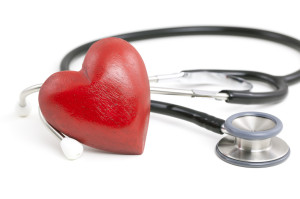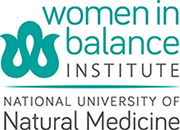 February is all about your heart and not only because it is the host month of Valentine’s Day. February is American Heart Month, a declaration that was made by President Lyndon B. Johnson in 1964 and one which serves as a perfect opportunity to check in on your heart’s health.
February is all about your heart and not only because it is the host month of Valentine’s Day. February is American Heart Month, a declaration that was made by President Lyndon B. Johnson in 1964 and one which serves as a perfect opportunity to check in on your heart’s health.
Taking care of your heart means adopting practices that promote cardiovascular health as well as wellness. These new heart-healthy habits are probably ones you do or used to do, but with the renewed sense of motivation that February and a new year can bring, maybe some of them will earn their spot back at the top of your priority list!
Four Practices to Give your Heart the TLC it Deserves
Nourish with Nutrients
Your body, and therefore your heart, will thank you abundantly for nourishing it with the vitamins, minerals and nutrients it so desperately wants and needs. A diet high in a variety of plant-based foods that includes vegetables, fruits, nuts, seeds and whole grains, as well as the healthy fats from these sources has been shown to reduce the risk of cardiovascular disease and promote heart health. 1 For a greater effect, slowly start to remove the foods that aren’t providing your body with positive and clean energy (e.g. many processed, packaged foods and greasy foods) so that your body can start to thrive.
Soak in the Sun
It feels good to let the sun’s rays warm your skin, but it also helps lift your mood. 2 Having a more positive mood can do wonders for relieving stress and reducing daily stress has been associated with a lower risk of cardiovascular health conditions. 3 Not only will the reduced stress benefit heart health, the exposure to sunlight allows our bodies to produce Vitamin D which emerging research has found to be connected to reduced risk for cardiovascular disease. 4, 5
Move your Body
We always hear that exercise is good for the body. Well, that’s because it’s true. A sedentary lifestyle has been associated with obesity, Type 2 diabetes, metabolic syndrome and other risk factors for cardiovascular disease. 6 Even just 75 minutes of exercise a week (that’s slightly less than 11 minutes a day) of vigorous activity has been shown to reduce one’s risk of cardiovascular disease and if you’re not into vigorous exercise, an average daily dose of 22 minutes of moderate exercise a day can lead to marked risk reductions. 6
Do What you Love to Do on a Regular Basis
If you love to knit, then knit. If you love cycling, then cycle. If you love cooking or reading or playing an instrument, then this should be a regular part of your week. You don’t have to knit every day nor do you have to play the piano for hours, but engaging in leisure activities that you enjoy is a great way to improve your mood and keep positivity in your daily life; it is also a great way to reduce stress. 7
References
- Hu FB. Plant-based foods and prevention of cardiovascular disease: an overview. Am J Clin Nutr. 2003; 78(3): 544-551. https://www-ncbi-nlm-nih-gov.nunm.idm.oclc.org/pubmed/?term=Plant-based+foods+and+prevention+of+cardiovascular+disease%3A+an+overview
- Jenkins TA, Nguyen JC, Polglaze KE, Bertrand PP. Influence of tryptophan and serotonin on mood and cognition with a possible role of the Gut-Brain Axis. Nutrients. 2016; 8(1): 1-15. doi:10.3390/nu8010056.
- Steptoe A, Kivimäki M. Stress and cardiovascular disease: an update on current knowledge. Annu Rev Public Health. 2013; 34: 337-54. doi: 10.1146/annurev-publhealth-031912-114452.
- Dong J, Lau CW, Wong SL, Huang Y. Cardiovascular benefits of vitamin D. Sheng Li Xue Bao. 2014; 66(1): 30-6. doi: 10.13294/j.aps.2014.0005.
- Holick MF. Sunlight and vitamin D for bone health and prevention of autoimmune diseases, cancers, and cardiovascular disease. Am J Clin Nutr. 2004; 80(6): 1678-88. http://ajcn.nutrition.org/content/80/6/1678S.long
- Shiroma EJ, Lee IM. Physical activity and cardiovascular health: lessons learned from epidemiological studies across age, gender, and race/ethnicity. Circulation. 2010; 122(7): 743-52. doi: 10.1161/CIRCULATIONAHA.109.914721.
- Zawadzki MJ, Smyth JM, Costigan HJ. Real-Time associations between engaging in leisure and daily health and well-being. Ann Behav Med. 2015; 49(4): 605-15. doi: 10.1007/s12160-015-9694-3.
By Wilfredo Benitez

